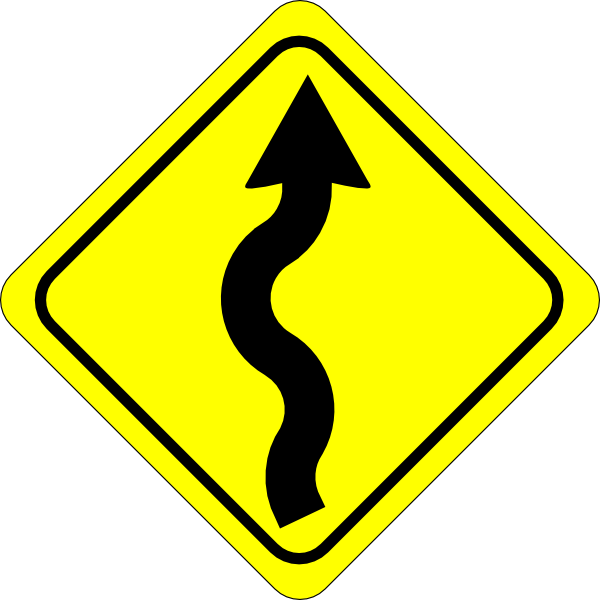 Any street sign with an arrow on it indicating the direction of travel always points up. But when you come down to it, that's arbitrary. Up is at right angles to forward, just as much as down is. So why do we use up-arrow for forward, universally? Is it just cultural?
Any street sign with an arrow on it indicating the direction of travel always points up. But when you come down to it, that's arbitrary. Up is at right angles to forward, just as much as down is. So why do we use up-arrow for forward, universally? Is it just cultural?I think it's a consequence of our biology. If you imagine looking at a map, where is the map? It's either in front of you, straight ahead, in the same orientation as the sign; or, it's down, in your lap or on your desk, below your head, so you have to turn your head downward to look at it. That's because your head easily pivots to look down or forward, but not as easily or naturally to look up. And that, in turn, is because if you're trying to make a living in the world, the most important directions to be looking are forward (at where you're going), and down (at the ground, where food, danger, and clues to navigation are).
Flounders live in a different environment. Looking forward isn't even important to them, and looking down is all but useless, but looking up is essential since that's where everything they need to see is, and since that's where the light is. Flounders, however, lack sapience and manipulative appendages.
But if there were a species somewhere that looked up and forward with the same ease we look down and forward, the way something that evolved in similar situations to the flounder might, but which had manipulative appendages and sapience suitable for making artifacts, eventually they might make maps. And they would, naturally, hold the maps the same place they held other tools: above them.
The direction a flounderperson is heading would still be indicated by the "forward" direction, same as for us (though on the bottom, not the top, of the sheet of paper). But when the flounderperson rotated its eyes, and frame of reference, from the map to the "forward" direction in its environment, this would suggest that the arrows that flounderpersons put on their signs would indicate forward with a downward-pointing arrow. And they would find this just as natural and intuitive and inescapable as we would about up-arrows, and find ours just as contrary and weird.
Otherwise, though, their signs and maps would be easily comprehensible to us, save only that if we found their maps we'd probably misinterpret them (by placing them on a table and looking down at them) and get our left and right reversed.

 RealTime and RTC
RealTime and RTC Prism
Prism Uncreated
Uncreated Bloodweavers
Bloodweavers Foulspawner's Legacy
Foulspawner's Legacy Lusternia
Lusternia
No comments:
Post a Comment